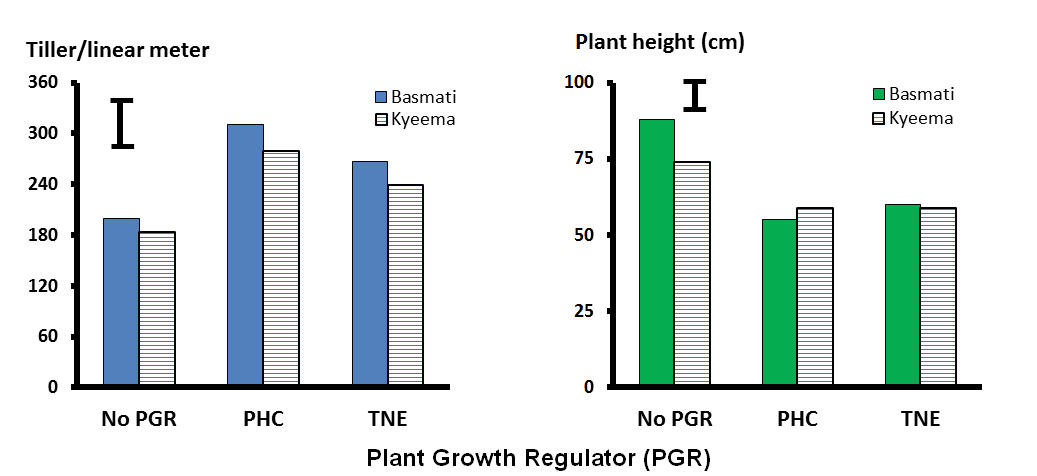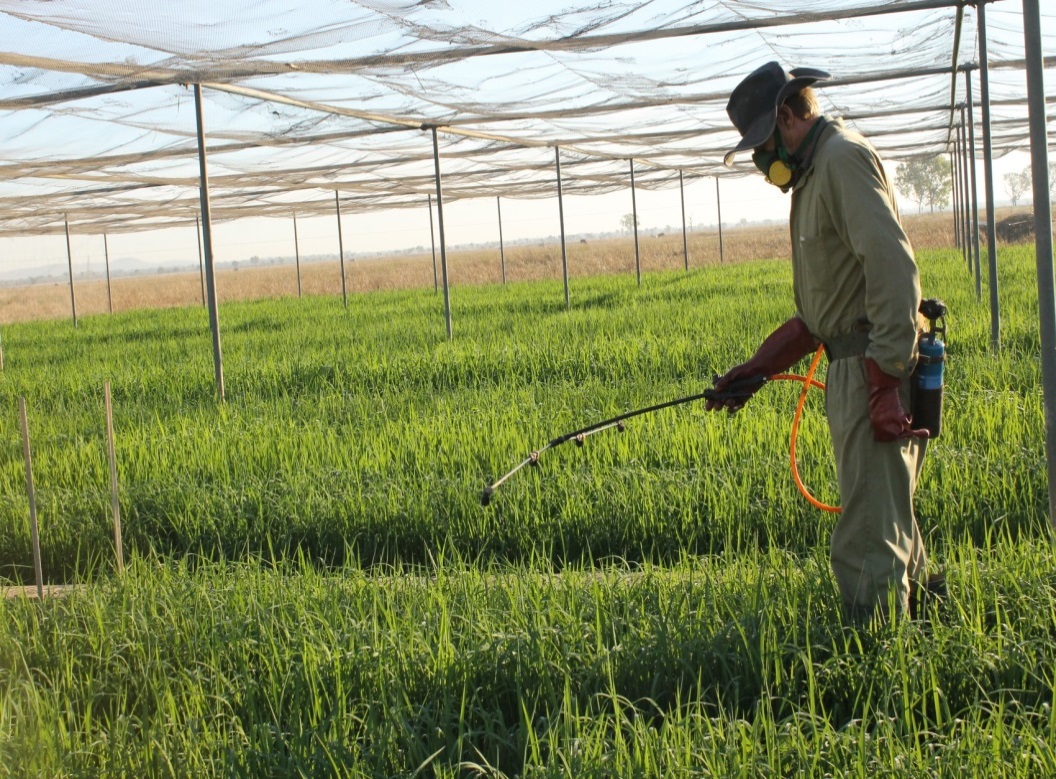Plant growth regulators evaluated in promising aromatic rice cultivars
Constancio Asis, Senior Research Agronomist and Nick Hartley, Senior Technical Officer, Darwin
Rice is an important crop for inclusion in diversified cropping systems in the Northern Territory. To develop a profitable rice industry, the Plant Industry Development Group of the NT Department of Primary Industry and Resources has been conducting trials at Tortilla Flats to identify aromatic rice cultivars suitable for the Top End. Aromatic rice commands higher prices in the local and international rice market and thus may provide higher financial returns to growers.
Nick Hartley applying plant growth regulator to rice at Tortilla Flats
Some of the promising aromatic rice cultivars grown under Tortilla Flats soil conditions are susceptible to lodging (falling over after a strong wind or heavy rainfall event). The agronomic character that contributes to lodging in these cultivars is their taller plant height. This problem needs research attention as plant lodging before harvest results in inefficient mechanical harvesting, low yield and poor grain quality, which in turn, reduces market price and profit.
Recently, several plant growth regulators (PGRs) have been applied in a number of agricultural and horticultural crops to modify growth, increase yield and improve yield quality. A PGR is an organic compound, natural (hormone) or synthetic, which changes plant growth and development when present or applied in small amounts.
Trinexapac-ethyl (TNE) and prohexadione-calcium (PHC) are family members of acylhexanedione PGRs that are now applied on temperate cereals. These PGRs reduce vegetative growth by blocking gibberellin biosynthesis, the hormone mainly responsible for controlling stem elongation. However, information on the use of TNE and PHC in reducing plant height and lodging resistance of aromatic rice is lacking and these PGRs are not registered for rice in Australia.
We are conducting a field trial to determine the effect of commercially available PGRs on the growth and yield of promising aromatic rice cultivars. The treatments were application of PGR TNE or PHC on rice cultivars Basmati and Kyeema. A treatment with no PGR application served as control. PGRs were sprayed 35, 45, and 55 days after emergence at label rates.
Data obtained 30 days after the last PGR application showed that tiller number per linear meter was similar between cultivars but higher in plots applied with PGR. Without PGR application, Basmati plants were taller than Kyeema but their plant height was significantly reduced, similar with application of either of the PGRs (Figure 1, below). These results indicate that PGR not only effectively reduced plant height, but also induced the plants to produce more tillers. We are still monitoring the experiment through to harvest to determine the effect of these PGRs on grain yield.Further studies will be conducted to determine the best time and amount of PGR application for these aromatic rice cultivars. We will also determine whether PGR will enhance nitrogen use efficiency of the crop. It is hoped that this research will enable us to formulate recommendations for improving lodging resistance of aromatic rice.

Figure 1. Plant population (tiller number per linear meter) and height (cm) of aromatic rice cultivars 30 days after last application of PGR prohexadione-calcium (PHC) and trinexapac-ethyl (TNE) at Tortilla Flats, Northern Territory, 2016. Bars indicate LSD at 5% level of significance.
Give feedback about this page.
Share this page:
URL copied!
